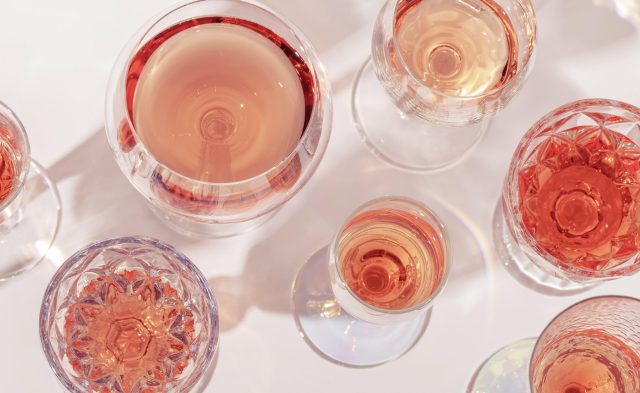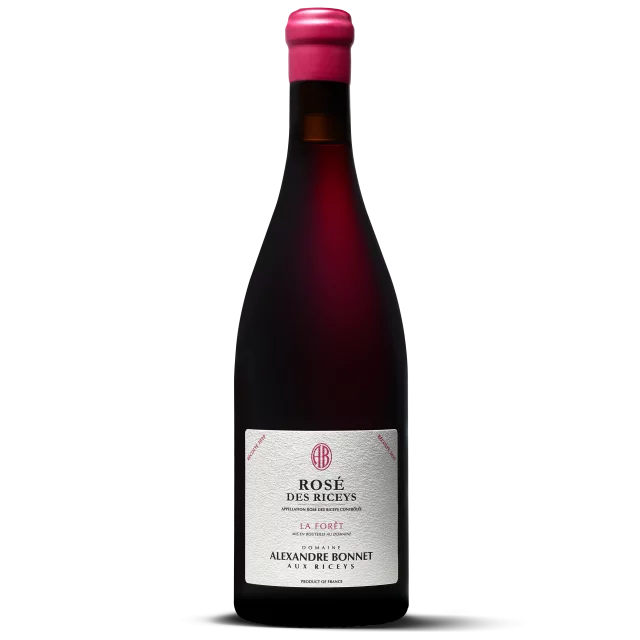This website uses cookies so that we can provide you with the best user experience possible. Cookie information is stored in your browser and performs functions such as recognising you when you return to our website and helping our team to understand which sections of the website you find most interesting and useful.
Why rosé remains an undefined wine
You might have thought a wine type as prevalent as rosé would have a precise definition, but there is none – and does that matter?

That was a point of brief discussion at the Fine Rosé Day on 19 June in London – an eye-opening event organised by pink wine specialist Elizabeth Gabay MW and her son Ben Bernheim that drew attention to the wide range of styles on the market today, particularly at the pricier end, where the colours can vary significantly from very pale copper to light ruby.
As a result of such diversity, Gabay was asked during a masterclass on the category, entitled ‘There’s more to rosé than pink’, whether there needs to be an official definition for rosé – for instance, a colour-based delineation that could be created by the OIV (International Organisation of Vine and Wine)?
The question came following a tasting of a Rosé Des Riceys called La Foret, made by Champagne house Domaine Alexandre Bonnet, which, due to its shade of light ruby (see picture below), appeared closer in appearance to a red wine than what one has come to expect colour-wise from the rosé category – which is a pale salmon pink.
Hailing from one of the oldest appellations for rosé wine in the world, this particular example was made by foot treading the grapes (Pinot Noir), followed by a semi-carbonic maceration, and then a fermentation that was stopped when it is around 75% complete, at which point the juice is drained off the skins, fermentation finishes, the malo-lactic conversation takes place, and then the wine spends two years maturing in a mixture of tanks and Burgundy barrels.
“It breaks every rule we all think we know for rosé, provoking ideas of what is a rosé?,” said Gabay about the wine, before stressing that in her view, it did warrant inclusion in her masterclass.
“It doesn’t finish the fermentation on the skins, so it is a rosé, but some people think it is a light red,” she said.
As to her response to the question as to whether there should be a definition of rosé, Gabay said, “I think we should get rid of the terms red, white, rosé and orange wine, because the gradations are not really there.”
But would it help if the OIV could agree on what is a rosé? she was then asked. “Absolutely not,” said Gabay, concluding, “I love the blurry line.”

During a subsequent discussion about rosé, in particular winemaking approaches, which took place during a dinner this week in London with Jean-François Ott, who is managing director of Domaines Ott in Provence, he stressed his lack of interest in the appearance of his wines.
“When I make my rosé, I never think about the colour,” he stated, before adding, “Only the smell and the taste matter.”
Admitting that there was one occasion when he was tasked by his team with possibly altering the appearance of his wine, even then, he chose not to.
“I once had an issue with our 2009 Château de Selle Rosé, because I was told it was too pale, and it was suggested we add some [darker pink wine made with] Cabernet,” he recalled.
But having tried the blend with the Cabernet, he said that the taste of the resulting wine was inferior.
As a result, we decided that “It was better to be a good wine and clear”, and hence eschewed the addition of any Cabernet-based rosé in the final blend.
Giving his wines and Provençal rosé their highly influential pale salmon pink appearance is a brief contact with cold grape skins – particularly with the light-coloured Grenache Noir grape.
“We harvest by hand and then we put the grapes in fridges, so when we press them, they are cold, and that means they give very little colour,” he explained.
Continuing, he said that the key to Provençal rosé was “to work on the pulp, not the skins” – with the latter being the source of colour (and tannin).
Furthermore, while it’s widely assumed that the style and appearance of rosé is due entirely to winemaking techniques, Ott stressed that it was vital to manage the vineyards for pink wine creation.
“For rosé, you want bigger berries, and you have to plan for that in the vineyard – you wouldn’t be able to switch [a rosé-making vineyard] to red; it would take 10 years,” he said, referring to the major changes in management needed to make a high-quality red wine from a vineyard designed for rosé production.
Harvest times are also at least two weeks earlier for Ott’s rosés compared to grape picking dates for making red wines, with the challenge for creating fine pink wine being the need to achieve ripeness with freshness.
For this balance to be struck, Ott said that it’s important to adjust the pruning regime towards lowering yields, commenting, “If you have more bunches, it’s harder to get ripeness.”
Noting that he aims for around eight bunches per vine – when some push for double that quantity – Ott said, “I would rather have fewer bunches with higher quality than more without.”
Domaines Ott is 100% certified organic, while, from next year, the brand’s entry-level By Ott label, which sources some juice and grapes from outside the estate, will also be organic, following the certification of its suppliers.
Alluding to the benefits of being organic, as well as relative ease of conversion in the dry, sunny climate of Provence, Ott said that every producer in this part of the country should follow the farming philosophy.
Scroll down to read about the OIV and European regulations on wine colours.
- According to an OIV report on the rosé market that was published in 2015, “there is no specific definition for rosé wine”.
- The document states: “The Combined Nomenclature (CN)2 and European regulations on the wine sector only differentiate a white wine from a non-white wine. This differentiation does not exist on a global level.”
- “For example, the OIV, which defines wine as a beverage resulting from the partial or complete alcoholic fermentation of fresh grapes, whether crushed or not, or of grape must, does not have specific analytical standards that distinguish wines according to their colour.”
- “Despite the fact that a precise definition of rosé wine does not exist, there are, however, specific production methods.”
Read more

